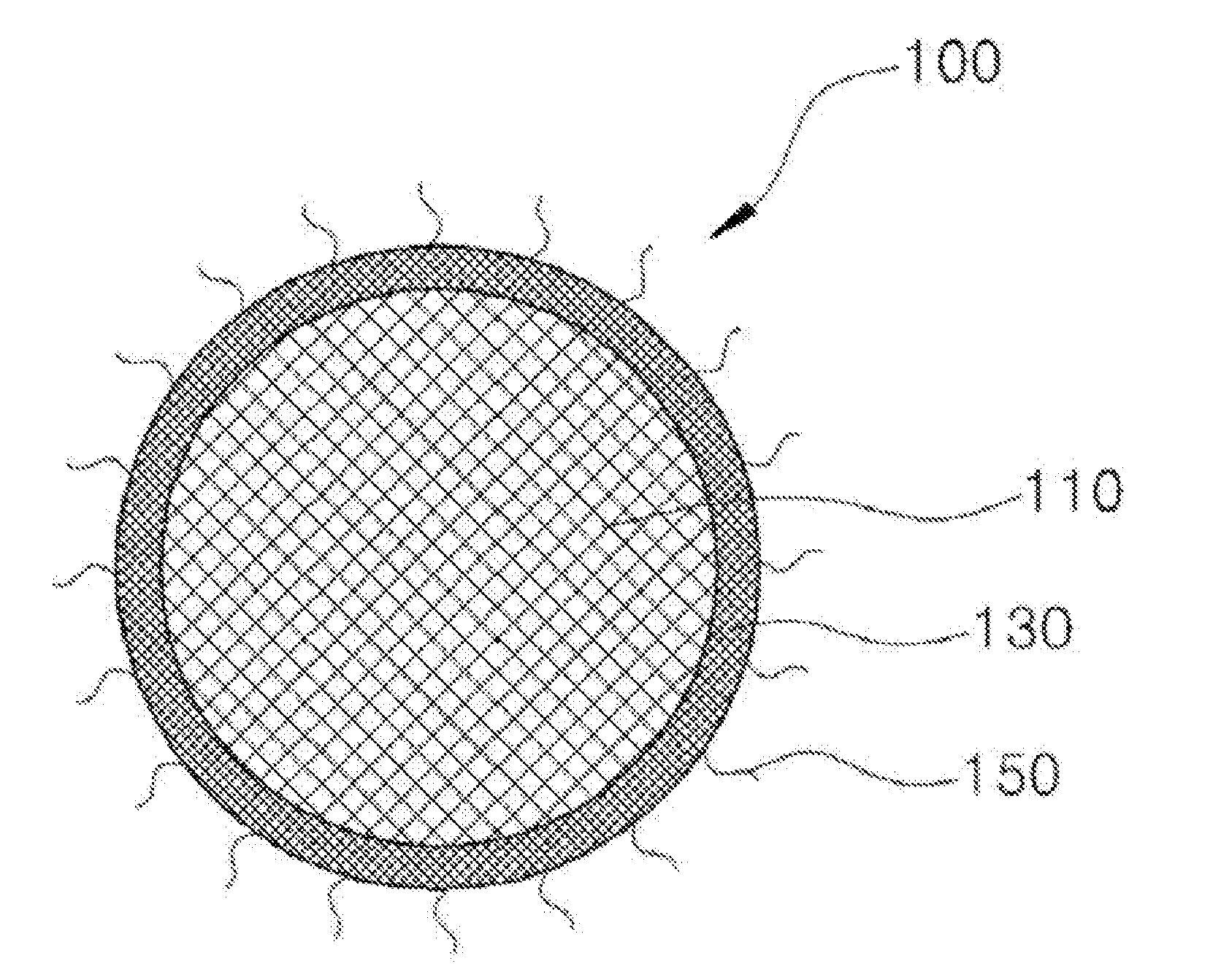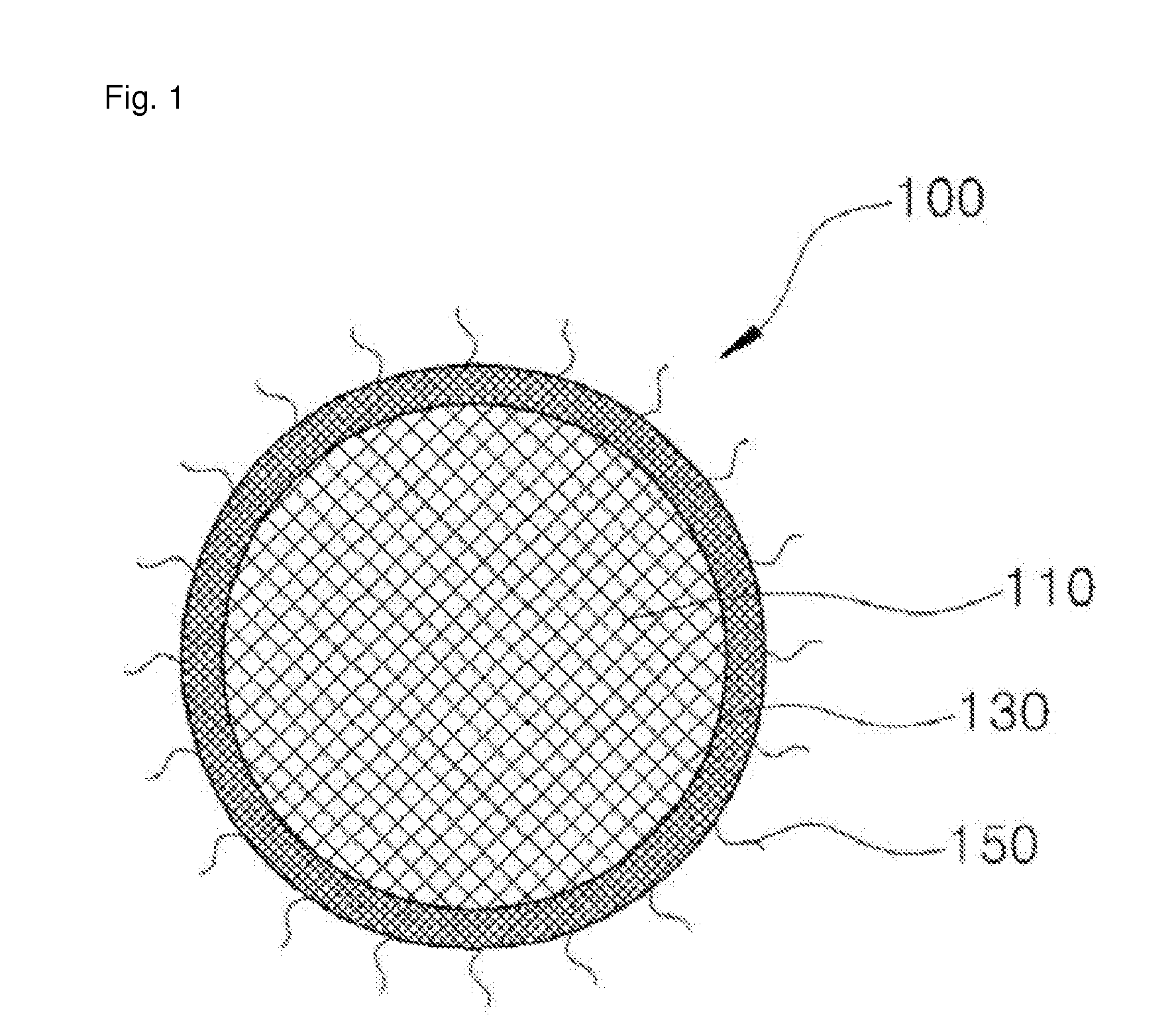Absorbent resin surface-modified with cationic polymer compound
a technology of absorbent resin and polymer compound, which is applied in the direction of other chemical processes, chemistry apparatus and processes, etc., can solve the problems of deterioration of the physical strength of the absorbent resin, fine powder, and increase the absorption rate, so as to achieve good absorption and low absorption rate , the effect of increasing the absorption ra
- Summary
- Abstract
- Description
- Claims
- Application Information
AI Technical Summary
Benefits of technology
Problems solved by technology
Method used
Image
Examples
example 1
[0063]To 500 g of acrylic acid was added 1.0 g of N,N′-methylene-bis-acrylamide as an internal cross-linking agent (i.e., a first cross-linking agent) and then 971.4 g of an aqueous solution of 20% sodium hydroxide, to prepare an aqueous solution of water-soluble unsaturated monomer (degree of neutralization of a monomer based on acrylic acid: 70 mol %).
[0064]The aqueous solution of water-soluble unsaturated monomer was fed into a 5 L twin-armed kneader equipped with a sigma-type axis, maintained at 40° C. and purged with nitrogen gas for 30 minutes to eliminate oxygen which was dissolved in the aqueous solution. While stirred, to the aqueous solution were added 50.1 g of 0.2 wt % L-ascorbic acid, 50.5 g of an aqueous solution of sodium persulfate, and 51.0 g of an aqueous solution of 2.0 wt % hydrogen peroxide. The polymerization reaction was initiated in 20 minutes, and the gel produced was finely divided by way of shear force for 30 minutes.
[0065]The gel finely divided was spread...
example 2
[0068]The procedures were conducted in the same manner as described in Example 1, excepting that the used amount of the 50% aqueous solution of polyacrylamide was 3.0 g rather than 1.0 g to prepare an absorbent resin of Example 2.
example 3
[0069]The procedures were conducted in the same manner as described in Example 1, excepting that the used amount of the 50% aqueous solution of polyacrylamide was 10.0 g rather than 1.0 g to prepare an absorbent resin of Example 3.
PUM
| Property | Measurement | Unit |
|---|---|---|
| mol % | aaaaa | aaaaa |
| particle size | aaaaa | aaaaa |
| weight | aaaaa | aaaaa |
Abstract
Description
Claims
Application Information
 Login to view more
Login to view more - R&D Engineer
- R&D Manager
- IP Professional
- Industry Leading Data Capabilities
- Powerful AI technology
- Patent DNA Extraction
Browse by: Latest US Patents, China's latest patents, Technical Efficacy Thesaurus, Application Domain, Technology Topic.
© 2024 PatSnap. All rights reserved.Legal|Privacy policy|Modern Slavery Act Transparency Statement|Sitemap


